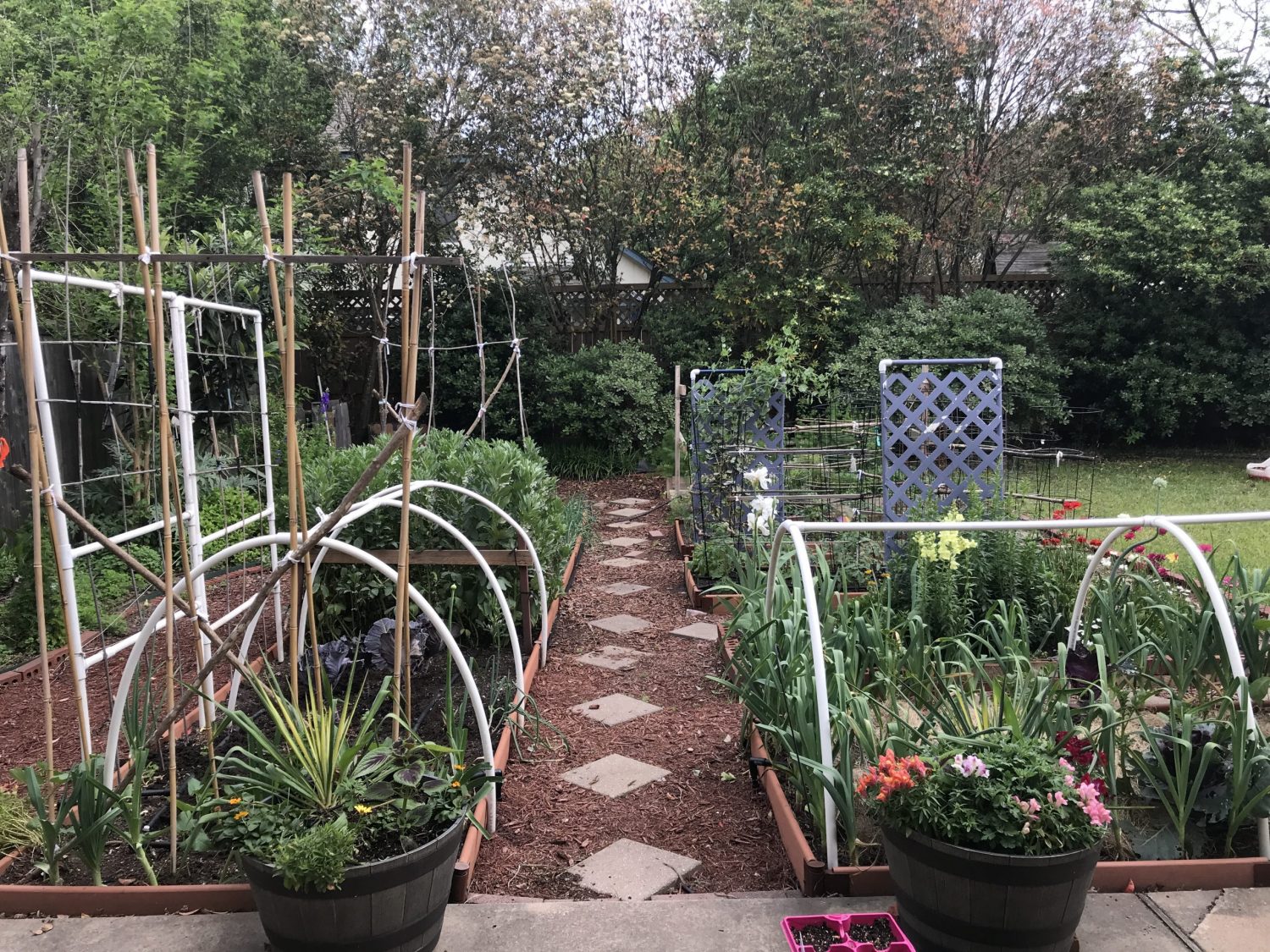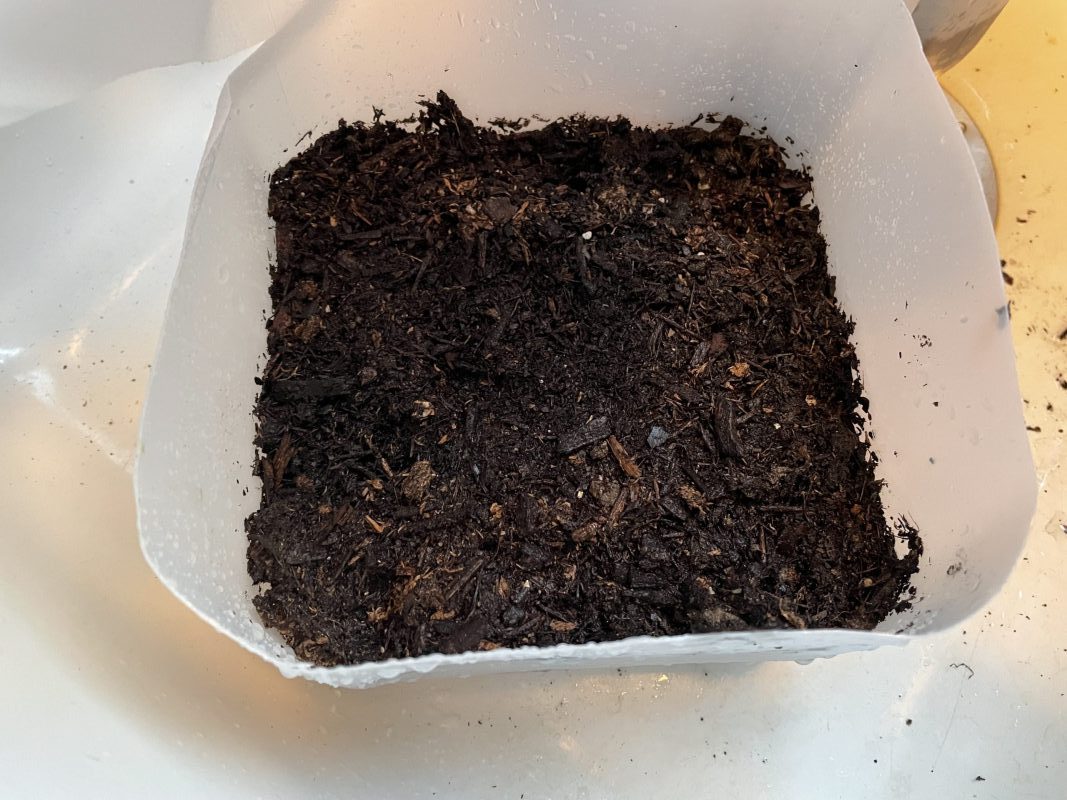What is organic gardening?
There is no clear definition of organic gardening. It is a way to grow plants without using synthetic products for beginners.
Some see it as the connection a gardener builds with nature. It is somewhat of a symbiotic relationship within the surrounding environment. Others think it is more about helping nature do its best to produce more and better.
As a general rule, organic gardening looks after nature and thrives on keeping it balanced and healthy. For this reason, it prohibits the use of synthetic chemicals in the form of pesticides, herbicides, or fertilizer.
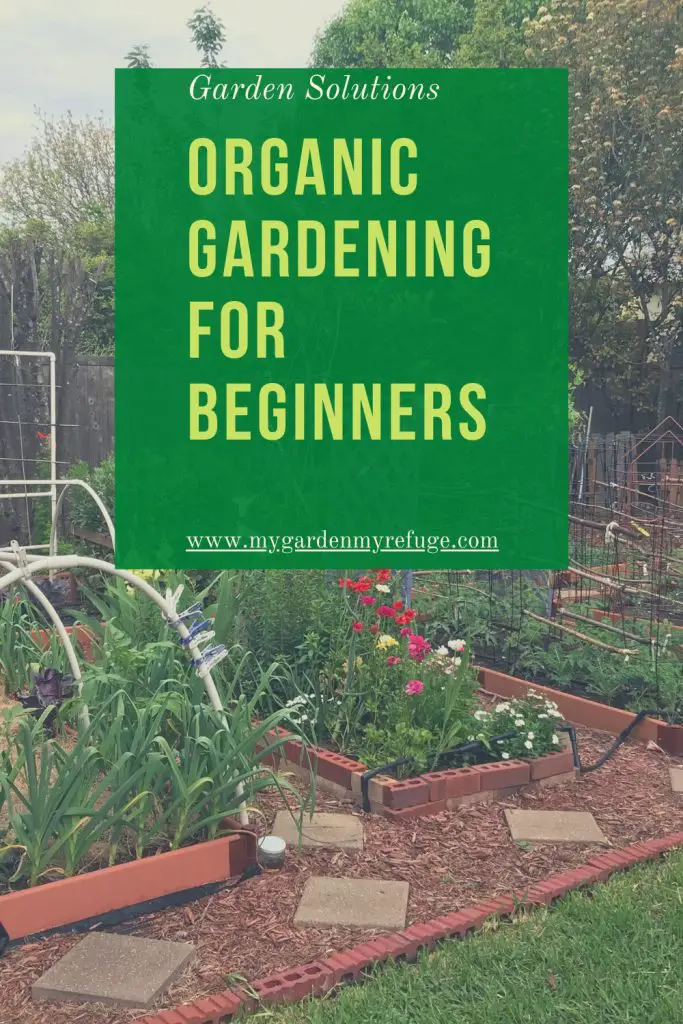
Organic gardening vs. organic growing
Organic gardening is different from organic farming. Gardening is on a small scale where people grow food for their personal use, while organic farming is a mass-production practice.
Organic practices are widely different for each. What might work for a home gardener might not for the organic farmer. Also, a gardener has more freedom on what to do in his garden, while the organic farmer has to follow a set of governmental rules to the letter.
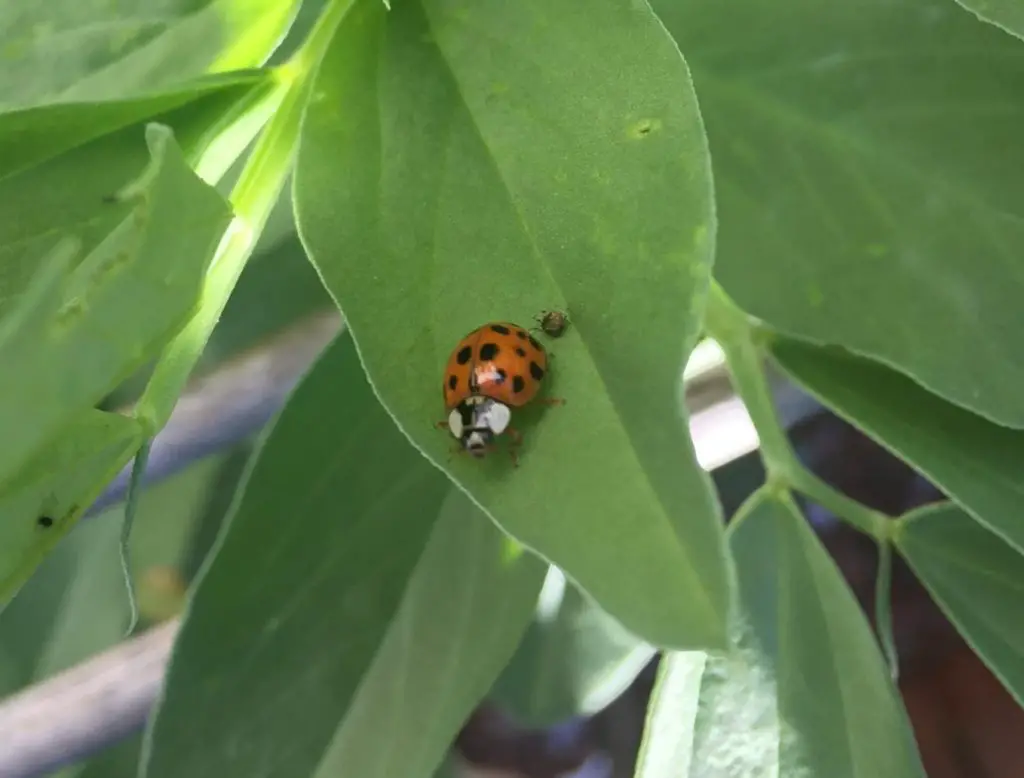
Top Organic gardening methods
There are many ways of organic gardening. The following is a list of the most common.
Traditional organic gardening
It is the standard method of gardening using traditional techniques such as single tilling and double-tilling to work the organic matter into the soil before each growing season. This method also uses both synthetic and organic fertilizers and treatments.
No-Dig method
The no-dig method focuses on preserving soil life by avoiding tilling. It states that such practice has many adverse effects on soil composition. Turning the soil disturbs the living organisms in it. Also, it encourages weed growth by exposing the dormant seeds to sunlight.
The no-dig method believes in building up the soil by adding a four-inch layer of compost every growing season. In the case of a new garden, a thick layer of cardboard is a great weed and grass suppressant to use before topping it with compost.
With the regular use of this method, soil texture improves gradually and becomes rich in micro-organisms and beneficial fungi. As a result, plants will also be healthy, which will make them less susceptible to disease and pests.
However, the no-dig method does not mention any specific way of dealing with pests and diseases. Therefore, it is no different from the traditional way of organic gardening, where a gardener may use organic pesticides or physical barriers to deal with harmful insects.
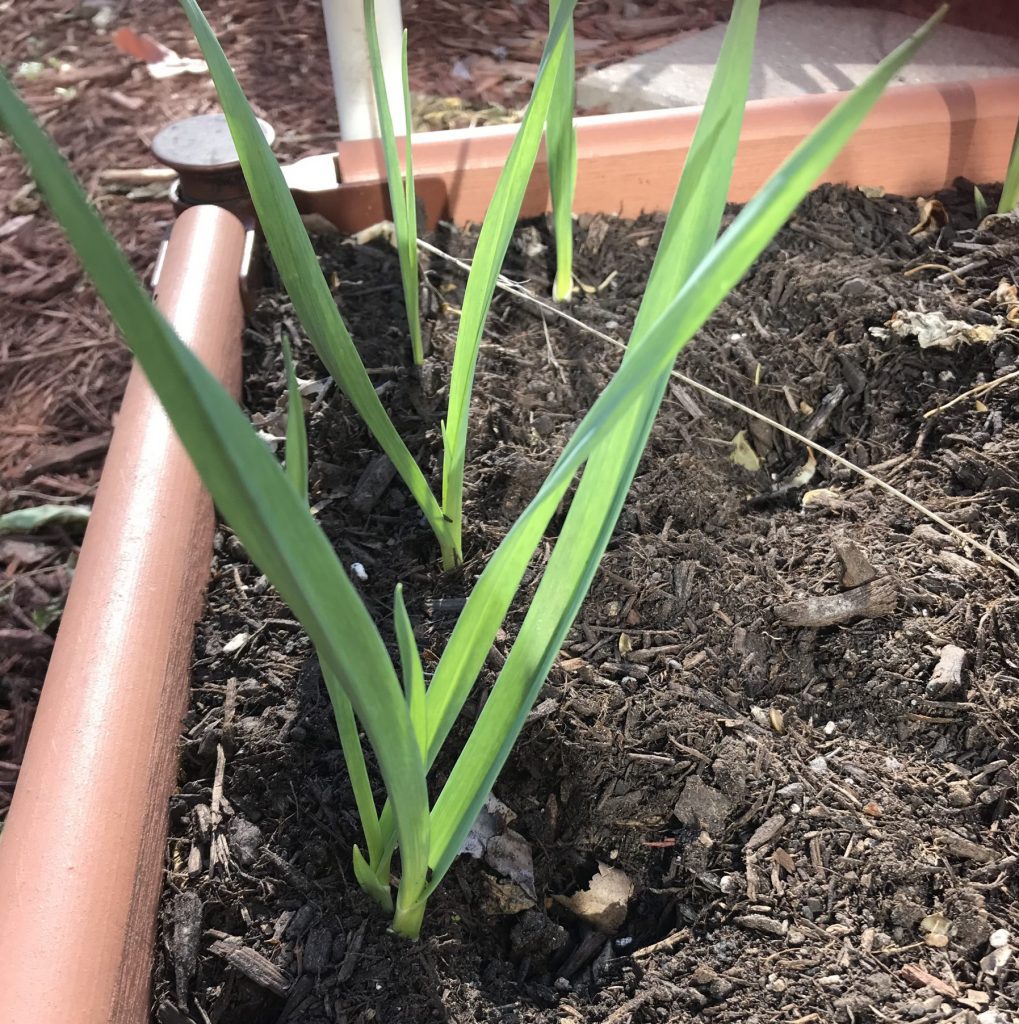
Back-to- Eden method
Paul Gautschi is the founder of the Back-to-Eden gardening method. He believes that the right approach to gardening is imitating nature, specifically the forest floor. The latter is never bare or exposed. Instead, its always covered with organic material, mainly tree bark and leaves.
This method is similar to No-dig by improving the soil without disturbing the living organisms within it. The main difference is that this method uses exclusively wood chips instead of compost.
It starts by laying a thick layer of wood chips during the dormant season and allowing it to settle and begin breaking down. Then, the mulch gets pulled back for planting to reach the rich soil down under.
The wood chips help existing soil retain moisture by reducing evaporation. It also reduces weed emergence by blocking the sunlight from reaching the buried weed seeds. And since there is no digging involved, soil life is safe. As a bonus, the wood chips naturally carry fungi spores, which add to the enrichment of the soil.
Click here to watch Paul’s explanation and how they came up with this method.
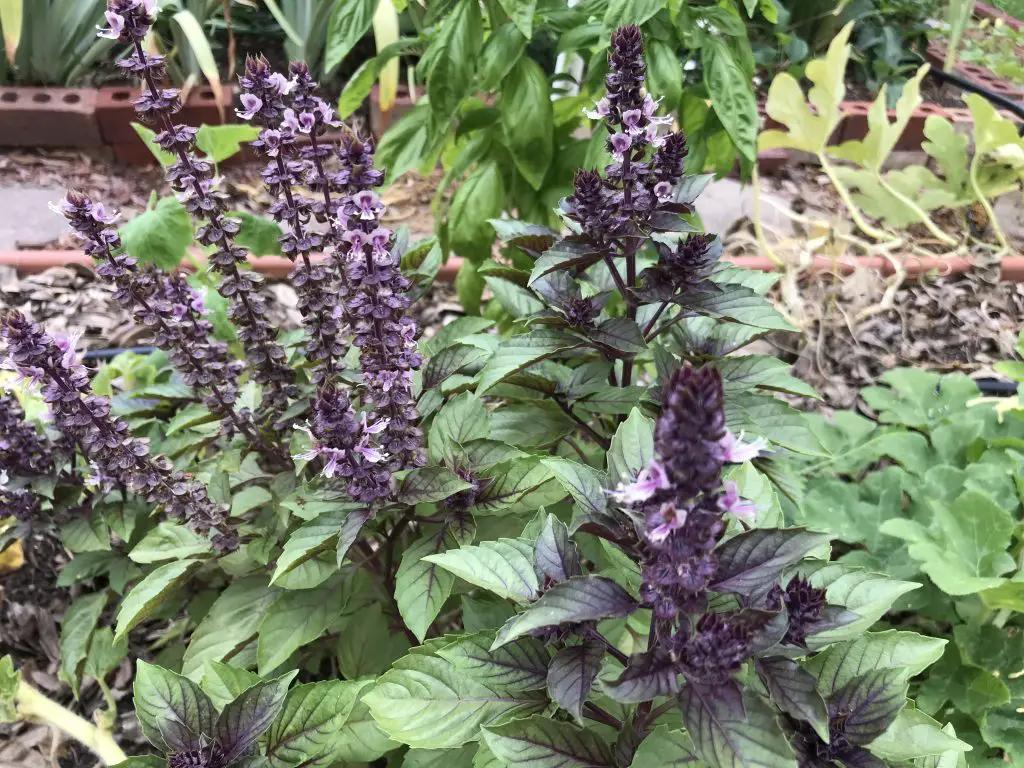
Permaculture
Permaculture is short for permanent culture, found by the Australian professor Bill Mollison, carried by David Holmgren.
Principles of permaculture
- Care for earth
- Care for people
- Set limitation population and consumption
It focuses on the natural elements’ design and arrangement, creating a sustainable and energy-efficient environment.
Take the example of raising goats and using them to eat weeds and clear up a piece of land. In this case, the goats are well-fed, making them ready to produce milk. The leftover twigs and branches become an excellent source to make fire. Finally, the freshly cleaned land gets planted with crop-producing plants.
In permaculture, everything gets used, reducing waste to almost nothing, and any unused energy is a form of pollution.
In this method, the gardener has to consider every aspect of his surroundings, including people. Permaculture design considers topography, climate, rain, water surfaces, wildlife, dwellings, and so on.
It also encourages us to take things slowly. Setting a garden is a progressive process that changes or develops as you learn more about your surrounding.
You might check out this work by Oregon State University on Youtube. It is very informative and self-explanatory. Click Here
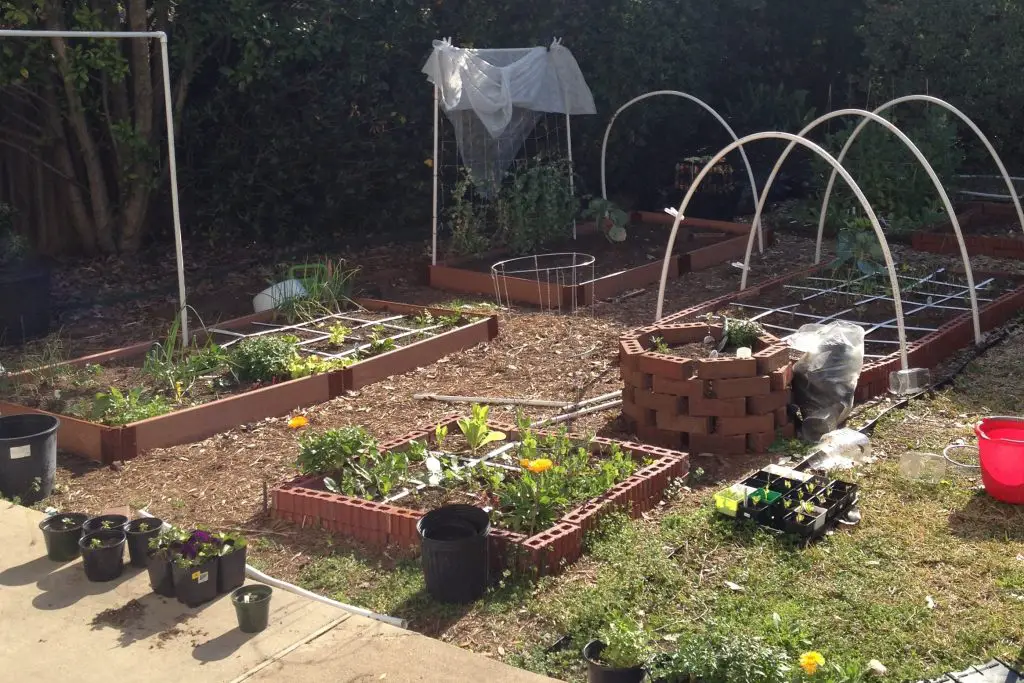
How to start an organic garden?
It is essential to set up a plan before starting an organic garden. First, any garden needs a sunny location, with at least six hours of direct sunlight. Then it has to be in proximity to a water source.
Organic soil
First, make sure the soil is organic and free of harmful chemicals. Testing a soil sample is a good start. Otherwise, with consistent organic practices, the ground will build itself along the way.
seeds
All the labels we find on the seed packets from heirloom, hybrid, GMO, to organic may get confusing. So let me simplify them for you.
- Organic seeds are seeds collected from fruits that have no synthetic treatment, such as fertilizer, herbicide, or insecticide.
- Heirloom seeds: are seeds collected from varieties grown for more than 50 years and handed down to generations. So, since families have been saving these seeds, they most likely haven’t been treated with synthetic products, making them organic. However, that’s no guarantee.
- Open-pollinated seeds: are from plants that get pollinated by insects, wind, humans, or any other natural mechanism. Every heirloom is open-pollinated, but not every open-pollinated is an heirloom.
- Hybrid seeds: are produced from a cross-pollinated plant. The first generation of seeds is called F1, and it carries the best genetic features of each parent plant.
- Genetically Modified Organism GMO seeds are lab-created by changing their genetic structure so that they would not occur naturally. The alteration can be between the same or different species, and these seeds are not available for domestic gardening use.
For your organic garden, you may choose any seed type since, in the end, your growing practice is what makes your crops organic.
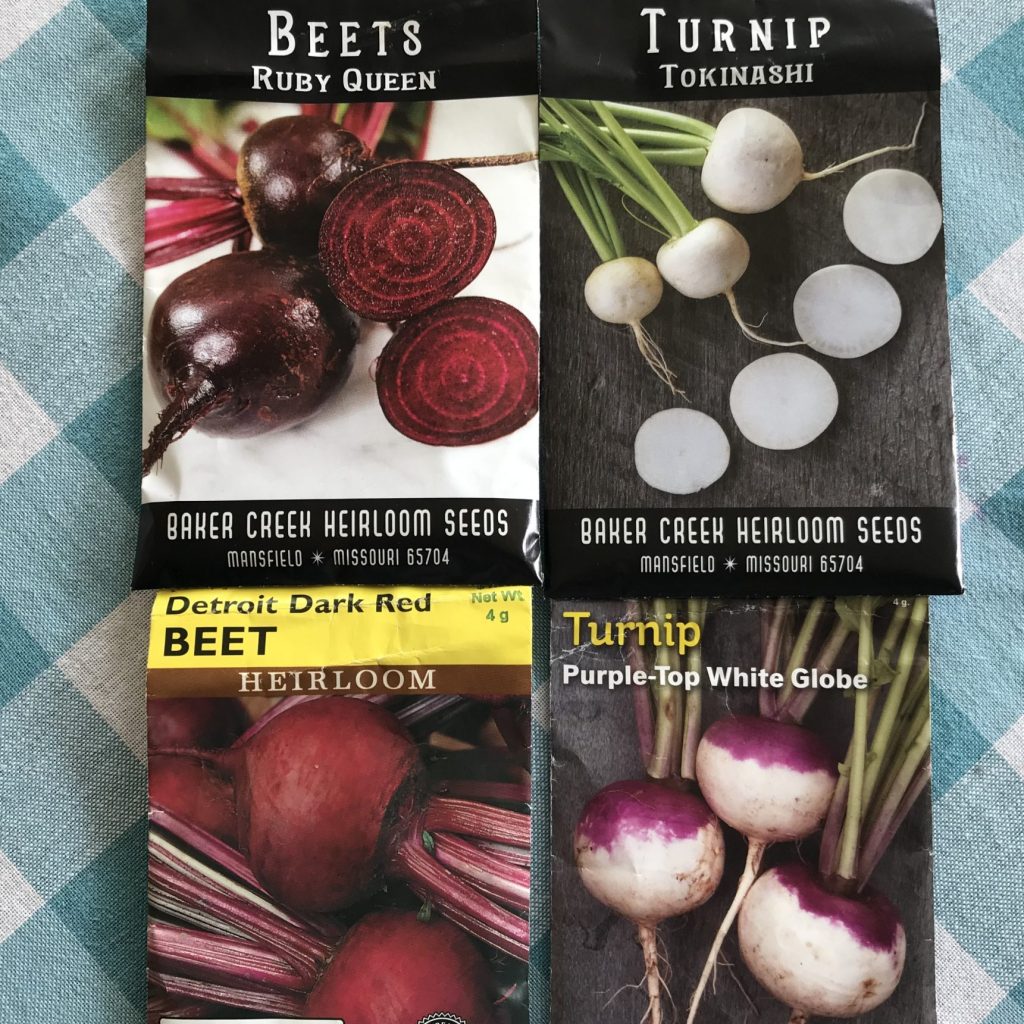
plants
If you are using commercial transplants, you may consider organically grown ones if you can afford them. Otherwise, use whatever is available and take it from there.
fertilizer
Organic fertilizers contain natural elements such as fish, kelp, and seaweed. They are slow-release, allowing the plant to take up nutrients as needed. Since they are not salt-based, they do not kill soil biology over time.
With consistent organic practices, the need for fertilizers grows low, and the soil becomes self-sufficient.
To learn more about starting a home garden, click here.
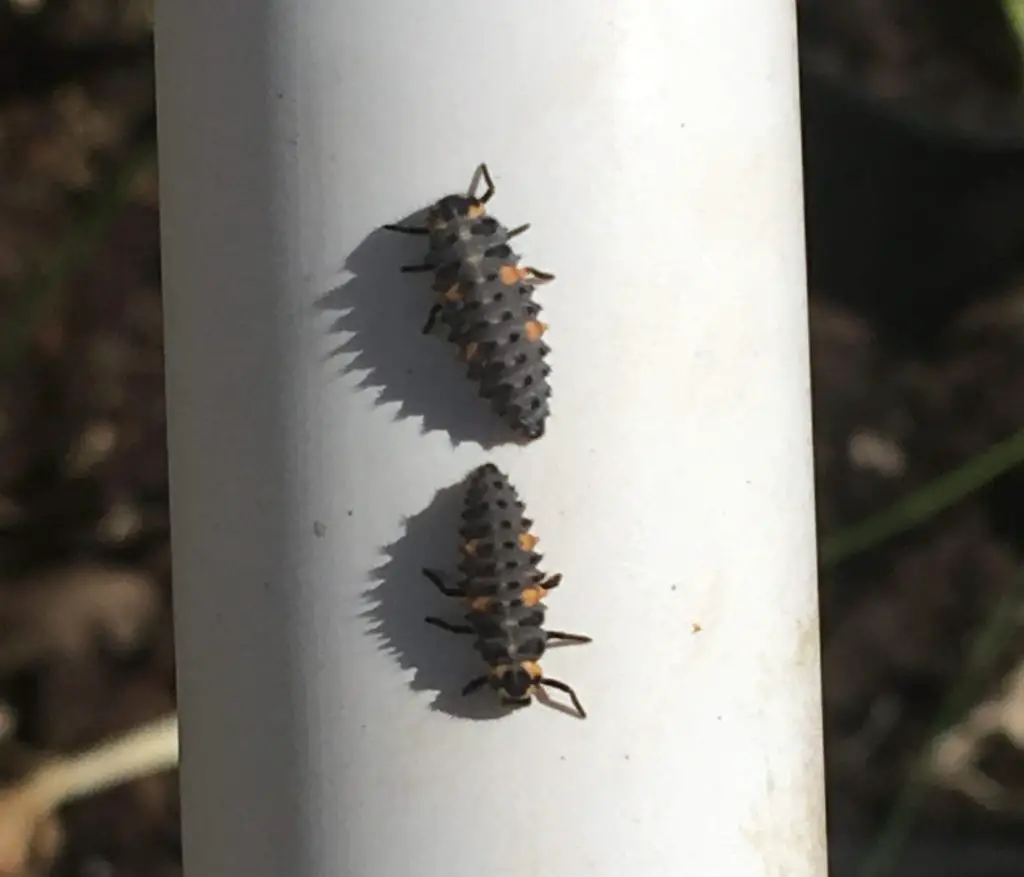
Organic Gardening practices
Many practices are involved in organic gardening.
1- Pest and disease control
Prevention is the first step toward pest and disease control in organic gardening. Using products to treat your infested or diseased plants is the last resort. The following are some preventative practices.
- Use companion planting to deter harmful insects.
- Plant flowering plants to attract beneficial insects.
- Use physical barriers, such as mesh covers or weed fabric.
- Set live traps or noisemakers to catch or scare rodents and birds away.
- Plant more disease-resistant varieties.
- Choose varieties that grow well in your area.
- Practice crop rotation to allow the soil to recover.
- Sanitize gardening tools to prevent cross-contamination.
- Use proper planting distance. Crowded planting reduces airflow, which can favor disease spread.
- Water early in the morning to allow soil and plant foliage to dry out to ecreases fungal diseases and sunburn.
Pest and Disease Control
If all the preventative measures fail, follow these steps before applying any treatment.
- Identify the problem: this is crucial to determine the way of intervention.
- Scale the damage: if the damage is not significant, there might not be a need for treatment.
- Determine treatment method: after scaling the damage, it becomes easier to decide how to deal with it. Treatment may be enough in case of a minor damage manual or spot. Use commercial products only in dire need.
2- Weed control
Unfortunately, there is no ultimate organic weed killer that would eliminate them. But some good habits may reduce their appearance.
- Handpick the weeds regularly, especially after rain. Roots are easier to pull in wet soil.
- Solarize the soil: hot summer days are ideal for solarizing. Lay a thick plastic or a tarp over the weed area. Secure it with landscape pins or rocks. It takes about seven to eight weeks to bake the area, killing all its living.
- If putting down a garden bed, you may use cardboard before adding soil to suppress the weeds and grass under it.
- Do not allow the weeds to reach the flowering stage. Flowers are future seeds that will spread everywhere.
The previous practices are effective on most weeds. However, some stubborn varieties are almost impossible to eliminate, such as sedges and Bermudagrass.
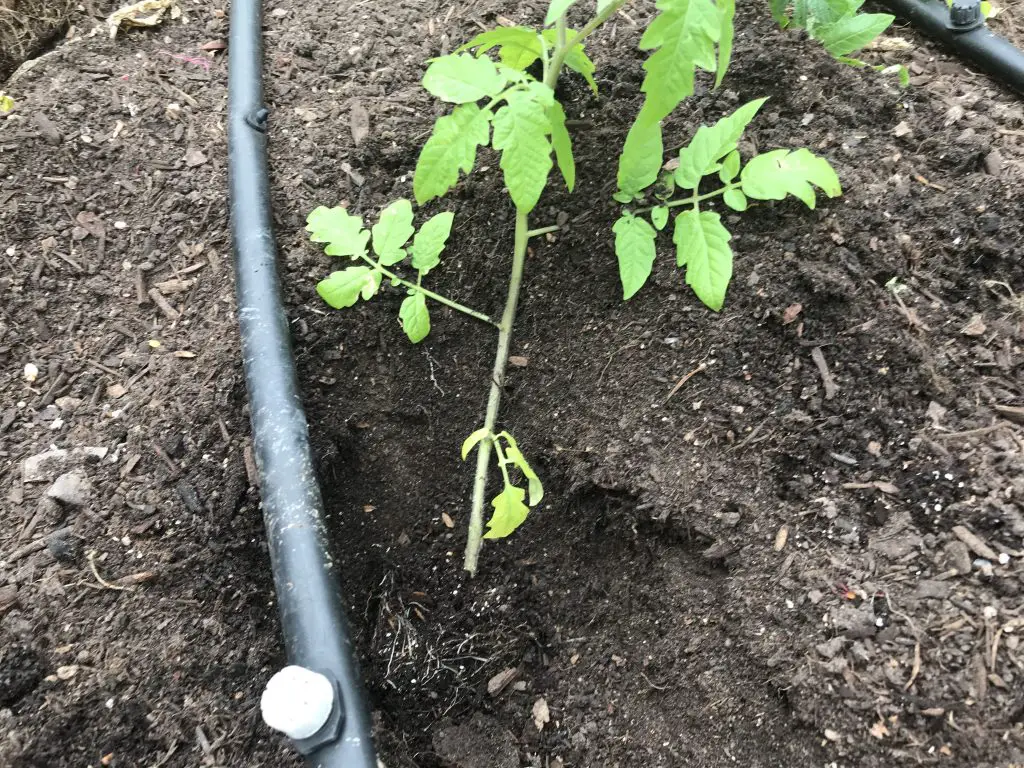
3- Good watering habits
Water management is critical in organic gardening.
- Watering deeply once a week is better than daily shallow watering. It encourages deep roots resulting in healthier plants.
- Using the right watering system is essential as well. Hand watering may be enjoyable, but it is not efficient. It takes a long-standing time to be able to soak the soil. Using a timed drip system is more effective with less water waste.
- It is best to water early in the morning to reduce water evaporation.
- Know your landscape and group plants according to their water needs to conserve water better.
- Use rainwater harvesting systems. It can be as simple as putting a garbage can under a roof spout. Using rainwater for the garden is better than using chlorinated city water.

4- Composting
Compost is one of the best soil amendments. Add it to sandy soil to improve its moisture retention and heavy clay to loosen it up and improve its drainage.
You can make compost by collecting kitchen scraps. You can also use well-rotted animal manure you would get from animal breeders that do not use any chemicals.
Both plant and animal-based compost must be well rotted and completely broken down. It should smell like soil and not like its source or like ammonia.
Click here to learn more about home composting.
5- Mulching
Mulching is another effective organic practice. Laying a 2-3 inches layer of mulch around your plants has many benefits.
- It maintains soil moisture longer by reducing evaporation.
- Mulching in winter protects the plants’ root system from freeze damage.
- It suppresses weeds by blocking the sunlight from reaching the dormant seeds.
- Mulch enriches the soil as it decomposes slowly, feeding soil organisms.
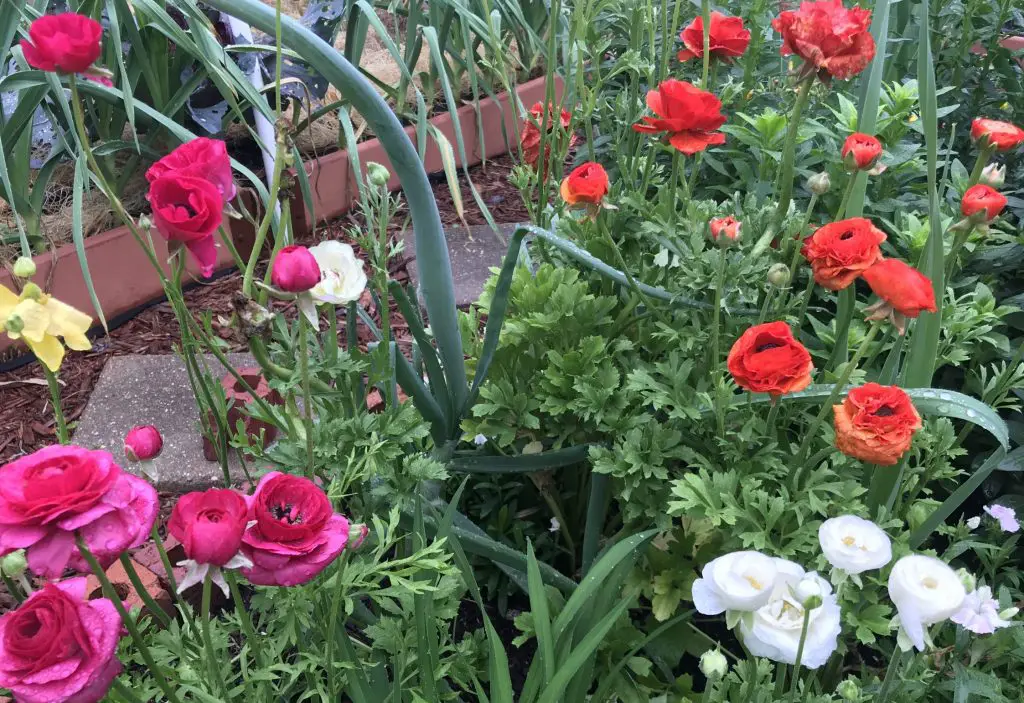
6- Poly-culture
Poly-culture means planting different plants on the same land to create a balanced environment.
- Attracts predators and pollinators, balancing insect population.
- Decreases the spread of diseases.
- It improves nutrient availability since each crop will use the nutrient it needs.
- Growing different crops in the same area is an efficient solution to increase yield.
7- Proper garden cleaning
An organic garden has to be well-kept to ensure a healthy landscape.
- Compost any healthy plant-based waste.
- Discard infested and diseased plants, either by throwing them in the trash or burning them.
- Pick up any rotted fruits to prevent further disease development.
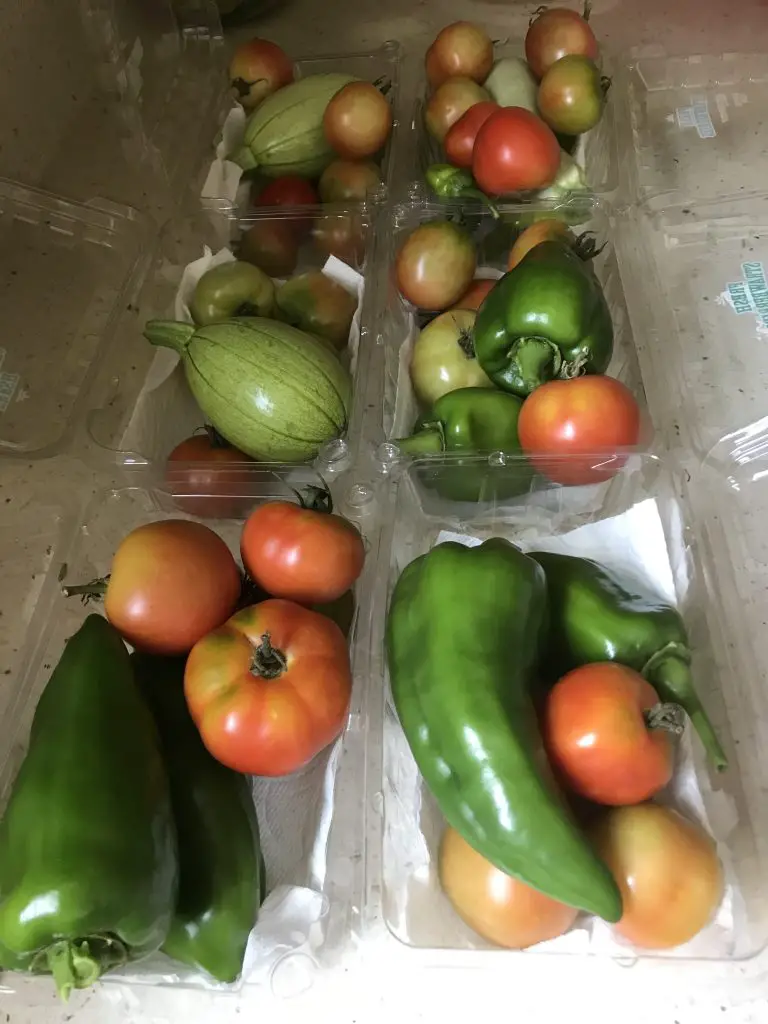
Is organic gardening beneficial?
Organic gardening has so many benefits for the environment and one’s well-being. The following is a list of some of them:
- Topsoil restoration and erosion prevention.
- Soil enrichment by preserving the life of its microorganisms.
- Reduction of toxic runoffs and soil contamination.
- It encourages wildlife by creating adequate habitats.
- Increasing water preservation through rainwater harvesting and proper watering techniques.
- Promoting a balanced environment by encouraging beneficial insects and promoting biodiversity in the landscape.
- It saves money by reducing the need to buy more fertilizers, pesticides, and herbicides.
- It helps calm the soul and turns the garden into a meditation corner filled with life.
- Watching nature is very calming and relaxing to the mind.
- Develops generosity when you share your harvest with others, strengthening community bonds.
- It teaches acceptance and content.
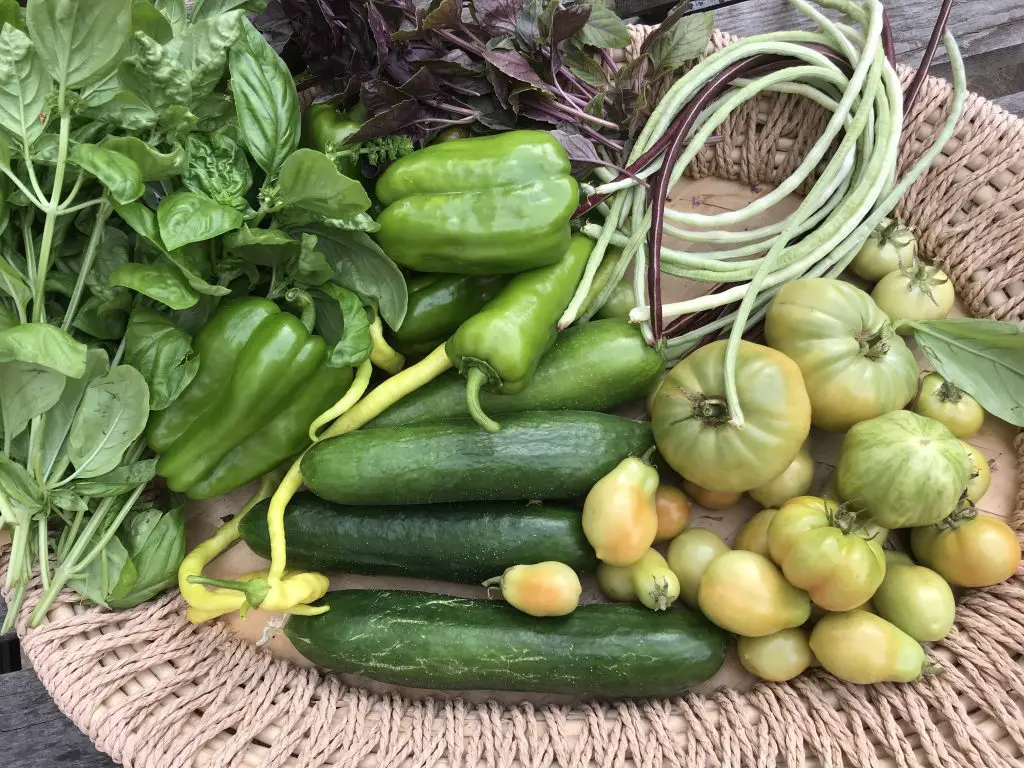
Does organic gardening work?
Organic gardening is a slow-paced process of growing food that requires extra attention and more understanding of the surroundings.
Does organic gardening require more work than conventional gardening?
When you consider organic gardening as a way to work with nature, you will never feel the urge to fix everything. Instead, you will look at pests and diseases differently than just elimination. You will allow nature to take its course and intervene only in extreme need.
The garden becomes a self-supporting system where every element has a role. For example, the predators take care of harmful insects, and soil organisms break down organic material providing nutrients to the plants.
In good soil, plants grow healthy. And healthy plants withstand diseases and pests much better. As a result, there is less need for chemical applications. And this leads to an abundance of pollinators, which ensures production. In the end, the gardener’s job will only involve planting, watering, and harvesting.
What are the cons of organic gardening?
Overall I don’t see any downside to organic gardening. It all depends on the person and their view of nature.
- People who don’t like bugs would not love organic gardening.
- Don’t expect perfect-looking fruits. For example, tomatoes won’t be round, and peppers may not be huge.
- Don’t expect fast results. Organic gardening takes time.
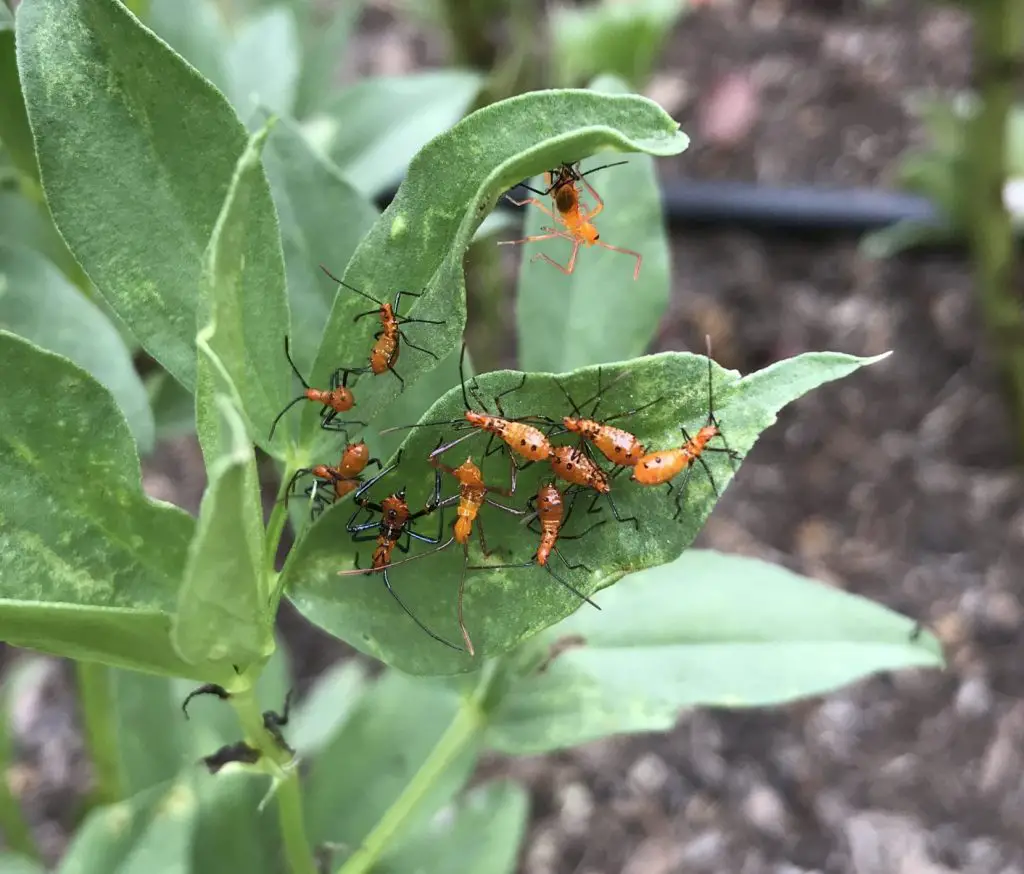
Is natural the same as organic?
Natural does not necessarily mean organic. A natural product means that its components derive from natural elements that are not chemically processed. For example, metals and salts are natural, but they are not organic.
Chemically speaking, an organic product is anything that contains carbon compounds, and when living things feed on them in nature, breaking them down into simpler elements.
Commercially speaking, an organic product contains components free of any pesticide, herbicide, or chemical treatment. Therefore, all organic is natural, but not all natural is organic.
